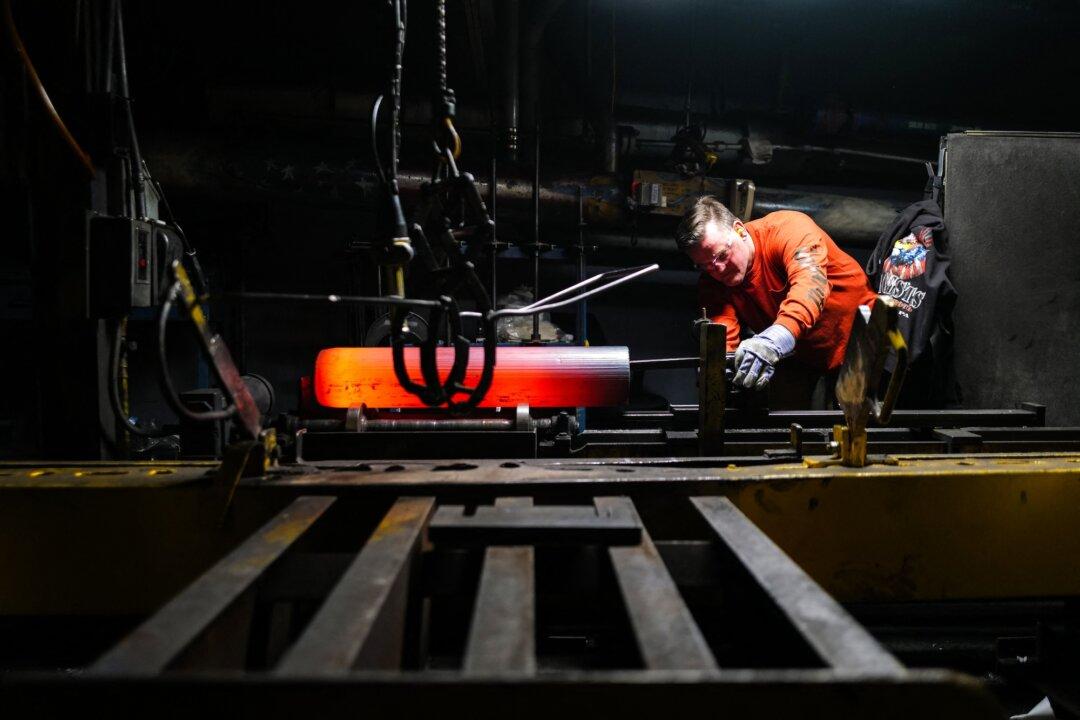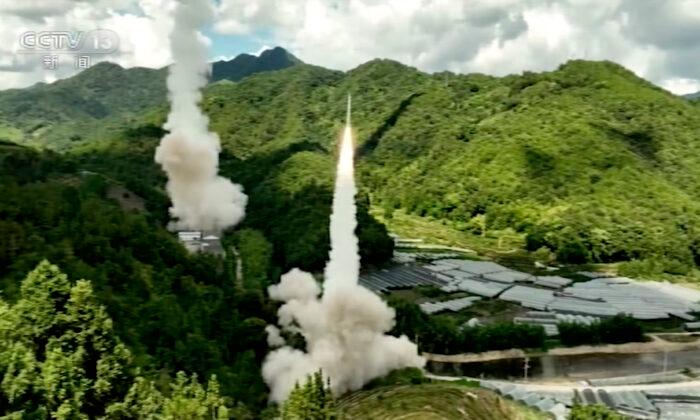On April 25, as Elon Musk appeared to clinch his $44 billion purchase of social media giant Twitter, his most prominent billionaire space rival and co-founder of marketing giant Amazon, Jeff Bezos, posted on Twitter, “Did the Chinese government just gain a bit of leverage over the town square?”
Amazon’s huge dependence on China notwithstanding, Bezos’ suggestion was not without basis.
While unreported in the U.S. media, on April 9, Musk made a brief video appearance at a Chinese Embassy propaganda forum led by the new Chinese ambassador to the United States, Qin Gang, ostensibly seeking to advance currently non-existent cooperation in space between the United States and China.
It was a reminder that the Chinese Communist Party (CCP) retains some leverage over Musk because the continued success of his large Tesla electric car factory in China requires full CCP cooperation, even though it surely will also try to steal Tesla technology in order to dominate this global market.
But the irony of the April 9 Chinese Embassy propaganda event is that in space, Musk and the CCP are titanic rivals whose respective ambitions will determine who controls the Earth-moon-Mars system.
Both American and Chinese military leaders understand that control over low Earth orbit (LEO) will rest increasingly on control over cislunar space between the Earth and moon, which rests on control, or at least denial of control, over the moon.
But success or “victory” for Musk, the United States, or China will also rest on their respective abilities to take full advantage of their diametrically-opposed systems.
Were it not for the American system of democracy and free enterprise with its massive access to capital, Musk would not have been able in less than two decades to build his SpaceX Corporation into the leading global innovator, producing ever larger reusable space launch vehicles (SLVs), offering revolutionary lower cost access to space.
Nor would he be able to undertake projects like populating the moon and Mars or deploying his planned 42,000 Starlink mega broadband satellite constellation.
The CCP’s goals for hegemony on Earth and in space require the end of democracy, starting with the democracy in Taiwan, and the dismantling of American-led democratic military alliances and the rules-based international order, to be replaced by a CCP-dominated order that determines a country’s prosperity, security, and access to space.
Especially in space, it has been the case that the increasing success of Musk and his SpaceX corporation has been tied to a mutually beneficial alliance with the U.S. government.
In 2020, America was able to break Russia’s monopoly on human transport to the International Space Station with the SpaceX Dragon manned spaceship. The National Aeronautics and Space Administration (NASA) has chosen the 100 tons of cargo capable SpaceX Starship to ensure its return to the moon around 2025.

If successful, Musk’s Starship could give the United States and its 19-nation Artemis moon program partnership a vital five-year head start over China’s blitz on the moon, which could begin just before 2030, and then intensify as it produces, reportedly, up to 10 annually of its 50-ton to the moon capable Long March-9 SLV.
But it appears that the CCP, displacing its former priority of ensnaring Tesla electric car technology, is now building up to frame Musk as a full challenge in space.
This began in December 2021 when China filed complaints at the United Nations that satellites from Musk’s Starlink constellation had threatened China’s new Tiangong space station in July and October 2021.
Then on May 5, 2022, China’s People’s Liberation Army (PLA) Daily, the main organ of the PLA, published a harsh attack on the SpaceX corporation, with its main ire directed at the now 2,200 satellite Starlink constellation.
Its “threats,” according to PLA Daily, include that Starlink has been used to transmit data to U.S. F-35 fighter jets, meaning it could also enable future “loyal wingman” unmanned aerial vehicle (UAV) fighters, “which means an operator can command a large number of UAVs to carry out tasks at the same time.”
After China has spent the last three decades trying to dominate the internet on Earth, the PLA Daily is now fearful that Starlink could become a separate “untouchable” spaceborne internet.
PLA Daily intones: “Defying restrictions in geography and landform, it provides wireless broadband Internet access services—as good as on the ground—to targets in air, on the far sea, on high mountains, and in the desert or remote areas, with the possibility of remaking the global Internet landscape.”
This means Starlink poses a direct threat to the dictatorship of the CCP. The article then attacks the larger threat of Musk’s SpaceX Corporation:
The CCP usually reveals its desires by projecting them as the crimes of its enemies. But it is the CCP that seeks hegemony in space by denying access to space resources to any country that may eventually seek to threaten the CCP’s hegemony on Earth.
Musk’s Starlink system is replacing Ukraine’s terrestrial internet and is being used to fight Russian invaders. So, too, could Taiwan harness Starlink to fight CCP invaders or sustain a post-invasion sovereignty.
Furthermore, Musk’s Starship could give the United States a vital head start in securing cislunar space and, by extension, a “high ground” from which to defend critical military surveillance satellites and then constellations like Starlink—confounding CCP goals for hegemony on Earth.
In this titanic contest, so far, it is Musk who has the edge over the CCP.
It is in America’s vital interest that Musk and other private deep-vision space entrepreneurs have the means to succeed. But expect the CCP to target their assets and ambitions as it builds the weapons to wage war in space against America.





